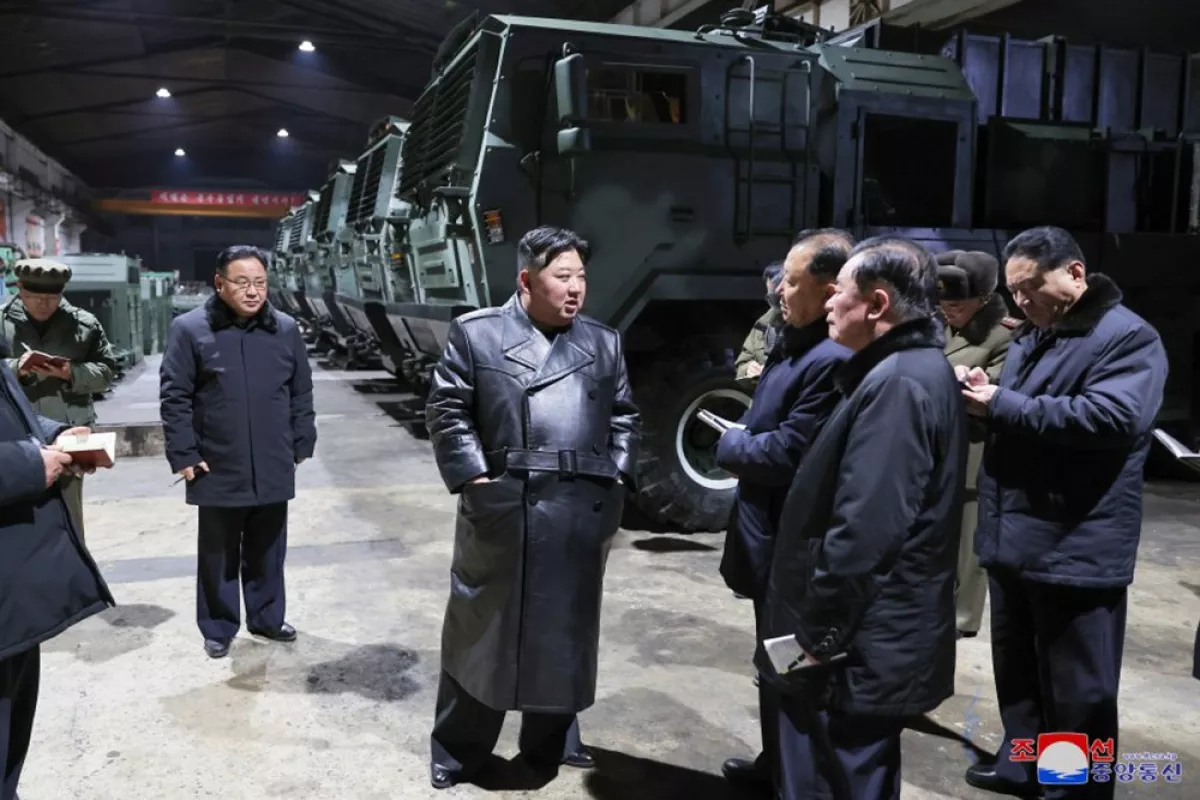Media: North Korea expands weapons facility linked to Russian missiles Used in Ukraine conflict
North Korea is significantly expanding a key weapons production complex, which assembles short-range missiles that have reportedly been used by Russian forces in their ongoing invasion of Ukraine, researchers from a US-based think tank have revealed.
This expansion was identified through recent satellite imagery, Caliber.Az reports, citing Reuters.
The facility, known as the February 11 plant, is located within the Ryongsong Machine Complex in Hamhung, North Korea's second-largest city, on the country’s east coast.
According to Sam Lair, a research associate at the James Martin Center for Nonproliferation Studies (CNS), this is the only known plant producing the Hwasong-11 class of solid-fuel ballistic missiles. These munitions, referred to as the KN-23 in the West, are believed to have been used by Russia in its assault on Ukraine.
The expansion of the complex had not been previously reported. Both Moscow and Pyongyang have denied any direct arms transfers from North Korea to Russia for use in Ukraine. However, the two countries have bolstered military cooperation, signing a mutual defence treaty in June, and have pledged to increase their ties further.
The satellite images, captured by Planet Labs in early October, show construction of an additional assembly building, as well as a new housing facility, likely intended for workers. There are also indications that Pyongyang is enhancing access to underground facilities within the complex.
Lair explained that the removal of a disused bridge crane from in front of a tunnel entrance suggests a focus on improving accessibility to this part of the site. "We see this as a suggestion that they're massively increasing, or trying to significantly increase, the throughput of this factory," Lair commented.
The new assembly building is estimated to be 60 to 70 percent the size of the original facility used for missile production. Images from North Korean state media, reviewed by Reuters, show leader Kim Jong Un visiting the complex in 2023, where workers were seen assembling components for the KN-23.
The KN-23, first tested in May 2019, is designed to fly on a low, "depressed" trajectory, making it harder for missile defences to intercept. Experts have said this feature makes the missile potentially useful for Russia, which is seeking ways to penetrate Ukraine’s air defences.
The construction at the complex coincides with Russia’s ongoing missile strikes in Ukraine. The increased production of such weapons could relieve strain on Russian missile supplies, said Lair. North Korean state news agency KCNA confirmed that construction at the Ryongsong complex is underway, including rebuilding and modernising production facilities.
Moreover, researchers at South Korean satellite imagery firm SI Analytics have also confirmed rapid construction at the facility. The firm noted that materials and vehicles around the site suggest accelerated progress. Although the firm did not specifically name the KN-23, it confirmed that the facility is used for ballistic missile production.
While North Korea’s missile exports remain a fraction of Russia’s total missile strikes, the alleged use of these weapons in the Ukraine conflict has raised concerns in both Washington and Seoul. This collaboration marks a shift in the UN Security Council’s long-standing efforts to prevent North Korea from expanding its missile capabilities.

By Aghakazim Guliyev








